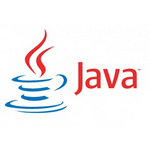随着互联网的发展,越来越多的企业开始重视在线客服应用的开发和使用,以提升用户体验、降低人力成本等目的。而java语言作为一款兼具灵活性和稳定性的编程语言,也成为企业开发在线客服应用的首选。本文将介绍java语言中在线客服应用的开发。
一、在线客服应用的基本原理
在线客服应用是一种实时通信应用程序,通过专业的通信技术,实现企业与客户之间的即时交流。在线客服使用的技术主要包括:WebSocket、TCP/IP、 HTTP协议、XMPP协议等。在Java语言中,可以使用Servlet技术、 JSP技术、WebSocket技术等来实现在线客服应用的开发。通过以上技术,我们可以实现实时通信、离线消息、会话管理等功能,提供更加便捷的服务,从而提高企业用户满意度。
二、Java语言中实现在线客服应用的技术
Servlet是用于服务于HTTP请求的一种Java程序。在在线客服应用中,我们可以借助Servlet技术实现HTTP请求和响应,获取和存储用户信息等操作。通过这种方式,客户可以发起请求,而服务端可以根据请求数据进行响应。
立即学习“Java免费学习笔记(深入)”;
JSP是一种动态网页开发技术,可以与Java语言结合使用。 JSP技术可以让项目开发者轻松地创建动态网页,实现在线客服应用中用户信息的显示和交互。
WebSocket是一种实时通信技术,可以在浏览器和服务器之间建立一条持久的连接。通过WebSocket,客户端可以实时与服务端进行通信,从而实现在线客服应用中的即时交流。
三、在线客服应用的开发流程
在开始在线客服应用的开发之前,需要进行开发环境的设置和技术准备。开发环境需要准备Java开发工具包(JDK)、Eclipse等开发工具,选择相应的技术框架进行开发。
第一步是实现登录功能。客户输入自己的用户名和密码,服务端进行验证后允许登录。
第二步是实现会话管理功能。在客户与服务端建立连接后,需要维护会话和访问状态,以实现实时通信、客户信息存储等功能。
第三步是实现发送消息功能。客户可以向在线客服发送消息,并将消息持久化到数据库中。
四、总结
Java语言是一种全球广泛使用的编程语言,在企业应用开发中扮演着重要的角色。其中,在线客服应用是一种非常实用的应用。本文介绍了Java语言中实现在线客服应用的技术和开发流程。无论是开发者还是用户,都可以通过在线客服应用享受到更加高效快捷的通讯服务。
以上就是Java语言中的在线客服应用开发介绍的详细内容,更多请关注php中文网其它相关文章!

java怎么学习?java怎么入门?java在哪学?java怎么学才快?不用担心,这里为大家提供了java速学教程(入门到精通),有需要的小伙伴保存下载就能学习啦!

Copyright 2014-2025 //m.sbmmt.com/ All Rights Reserved | php.cn | 湘ICP备2023035733号